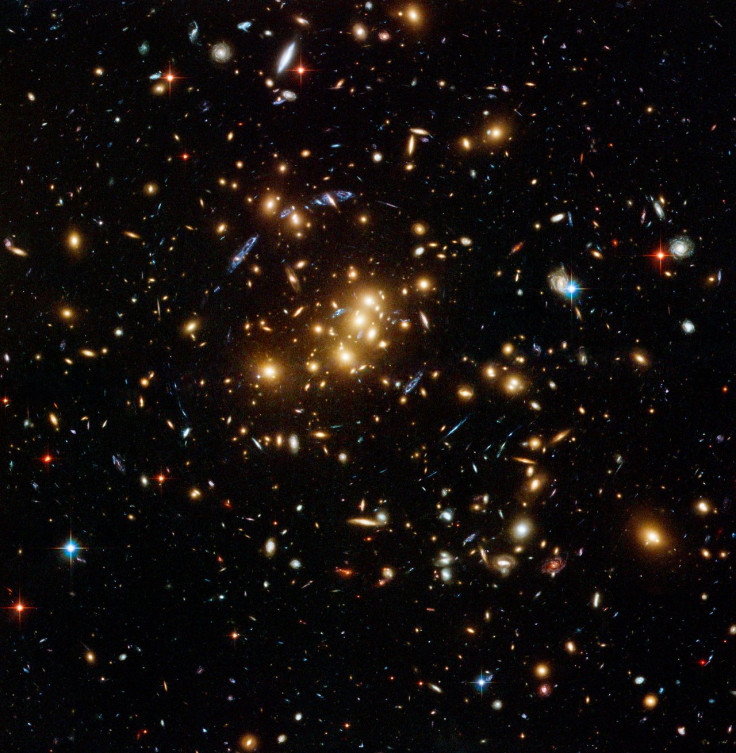'Biggest bang since the Big Bang': Two galaxy clusters are colliding at incredible speed
What happens when the largest gravitationally bound structures in the universe collide?
Two galaxy clusters – each made up of hundreds of galaxies – are colliding to form the even larger galaxy cluster Abell 115. As they do so, they are creating a turbulent cloud of gas between the clusters that is heating up to hundreds of millions of degrees.
Abell 115 lies about 2.4 billion light years from Earth. The two clusters that are combining to form it are thought to have flown past each other before, stripping each other of gas before they finally merge.
"Energetically speaking, galaxy cluster merging events are the biggest bangs in the universe since the Big Bang," said Burns. "These are massive, very dynamic systems that continue to evolve to this day."
The collision has now started. Turbulent clouds of gas caught in the middle are being heated up to about 300 million F (167 million C). That's 10 times hotter than the core of the Sun.
"We did not expect to see such very hot gas between the cluster components," said Jack Burns of the University of Colorado Boulder, who is presented the research at the 230th Meeting of the American Astronomical Society.
"We think the turbulence is like a big spoon stirring up gases, converting the energy of motion from the merging clusters into thermal energy. It is a manifestation of them banging together like two giant pots, something we have not really seen before."
Burns and his colleagues observed the collision using NASA's orbiting Chandra X-ray Observatory and the Karl G. Jansky Very Large Array, based in New Mexico.
Next they will investigate radio emissions from the collision. These are emitted from electrons travelling at nearly the speed of light, and interacting with the clusters' magnetic field.

Exactly what will happen at the end of the merging process is not yet fully understood.
"Our computer simulations show these cluster mergers can be really complicated in terms of the accretion process, depending on the state we catch them in," said Burns.
"We believe Abell 115 will eventually 'relax' and become centrally condensed, which is relatively boring compared to what we are seeing now."
© Copyright IBTimes 2025. All rights reserved.






















